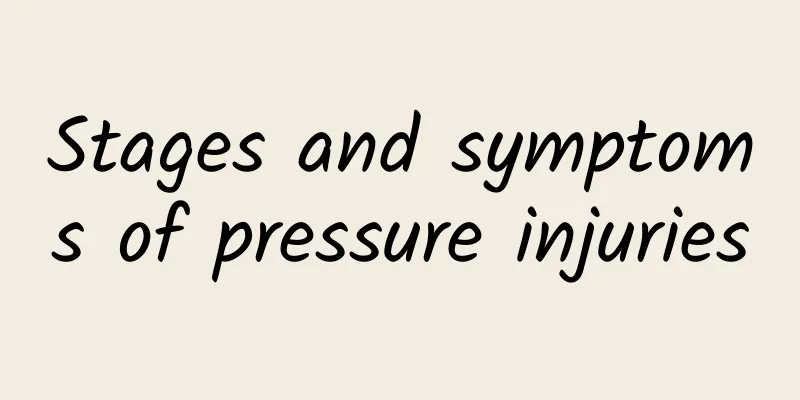World Pulmonary Hypertension Day丨What are dangerous "blue lips"?

|
In 1981, an incident of pulmonary hypertension caused by poisonous rapeseed oil occurred in Spain, with 20,000 victims. In May of that year, an 8-year-old boy became the first death in this incident. In order to commemorate the deceased child, Spain proposed to designate May 5th of each year as "World Pulmonary Hypertension Day" to raise people's awareness of pulmonary hypertension and promote the improvement of prevention and treatment levels. Patients with pulmonary hypertension have cyanotic lips due to lack of oxygen, so "blue lips" is a nickname for patients with pulmonary hypertension and is also an internationally recognized symbol for promoting pulmonary hypertension. So, what is pulmonary hypertension? How can it be prevented and treated? Pulmonary hypertension is a type of high blood pressure that occurs in the lungs. It is caused by various reasons that lead to changes in the structure and/or function of the pulmonary vascular bed. It is manifested by a progressive increase in pulmonary vascular resistance and pulmonary artery pressure, with or without small pulmonary artery lesions, which eventually causes right ventricular dilatation, leading to right heart failure and even death. It is a malignant pulmonary vascular syndrome. In simple terms, pulmonary hypertension is a type of high blood pressure that occurs in the lungs. As the patient's pulmonary vascular pressure and resistance continue to increase, it can eventually lead to heart and lung failure. Pulmonary hypertension can be divided into two categories: primary and secondary. Primary pulmonary hypertension refers to pulmonary hypertension without a clear cause, such as idiopathic pulmonary hypertension; secondary pulmonary hypertension is pulmonary hypertension caused by the long-term action of a certain pathogenic factor, such as pulmonary hypertension caused by pulmonary embolism and chronic obstructive pulmonary disease. If idiopathic pulmonary hypertension is not treated, the median survival time is only 2.8 years, and the mortality rate is even higher than that of breast cancer and colorectal cancer. At present, the cause of the disease is unknown. Registry studies have reported that its lowest prevalence is about 5.9/million people, with an average age of onset of 36 years, and it is mainly female. The incidence of secondary pulmonary hypertension is higher than that of primary pulmonary hypertension. Generally, after the cause is improved, the pulmonary artery pressure will decrease, but because many heart and lung system diseases are complicated by pulmonary hypertension, it will also lead to increased morbidity and mortality. Clinical manifestations to note Pulmonary hypertension generally has no obvious symptoms in the early stage, but as the disease worsens, the symptoms become more and more obvious. The clinical symptoms of pulmonary hypertension lack specificity, and are mainly manifested by symptoms related to progressive right heart failure, which are often induced by exertion, manifested as fatigue, dyspnea (cyanosis of fingertips, auricles and lips caused by hypoxia), chest tightness, chest pain and syncope. Some patients may also experience dry cough and exercise-induced nausea and vomiting. When the disease worsens further and causes right heart failure, loss of appetite, nausea, vomiting, upper abdominal distension and pain, ankle, lower limb and even abdominal and whole body edema may occur. The underlying disease or concomitant disease that causes pulmonary hypertension will also have corresponding clinical manifestations. The clinical manifestations of some patients are related to the complications of pulmonary hypertension and abnormal distribution of pulmonary blood flow. There will also be symptoms such as hemoptysis, hoarseness, and chest pain. Early identification is important Although pulmonary arterial hypertension is a difficult-to-treat disease with a poor prognosis, with the progress of targeted drug treatment in recent years, the survival rate and quality of life of patients have been significantly improved. The treatment effect and prognosis of patients with late-stage pulmonary hypertension are poor, but timely and early diagnosis and treatment can stabilize the condition of some patients and slow the progression of the disease. Therefore, early detection, early treatment and standardized follow-up management are the key to the treatment of pulmonary hypertension. The "Guidelines for the Diagnosis and Treatment of Pulmonary Hypertension in China" released in 2021 mentioned: For people with connective tissue diseases, congenital heart disease, vascular embolic diseases, family history of idiopathic pulmonary hypertension, etc., it is necessary to pay attention to the screening, follow-up and management of pulmonary hypertension. At the same time, avoid taking drugs and toxins that can cause pulmonary hypertension, such as diet pills containing appetite suppressants, toxic rapeseed oil, methamphetamine, cocaine, etc. Using targeted drug therapy The treatment of pulmonary hypertension includes general measures and drug therapy. General measures include professional rehabilitation exercise training, social and psychological support, contraception, vaccination, etc. Drug therapy is used for patients with obvious clinical symptoms. Secondary pulmonary hypertension generally actively treats the primary disease, while primary pulmonary hypertension generally uses targeted drugs. Currently, the commonly used targeted drugs in clinical practice are: 1. Endothelin receptor antagonists, such as bosentan, macitentan, etc.; 2. Phosphodiesterase type 5 inhibitors, such as sildenafil, vardenafil, etc.; 3. Guanylate cyclase agonists, such as riociguat; 4. Prostacyclin analogs and prostacyclin receptor agonists, such as epoprostenol, iloprost, treprostinil and selexipag. Patients with primary pulmonary hypertension can receive combined treatment with targeted drugs in the early stages of the disease. For the general population, attention should be paid to maintaining a healthy lifestyle, including quitting smoking, limiting alcohol consumption, and using diet pills with caution. For high-risk groups, especially those with cardiopulmonary diseases, family history of idiopathic pulmonary hypertension or hereditary pulmonary hypertension, connective tissue diseases, portal hypertension, and HIV infection, attention should be paid to monitoring, active control and treatment of the primary disease, and timely detection of pulmonary hypertension. For patients who already have pulmonary hypertension, active treatment should be given to improve prognosis. Women should avoid pregnancy, colds, heavy physical activities and other factors that aggravate pulmonary hypertension. Family members are encouraged to provide psychological support to avoid anxiety, depression and other emotions. |
>>: What secrets are hidden in the drug label? Revealed soon~
Recommend
My period came back after a week.
As we all know, menstruation usually occurs once ...
What are the acupuncture points that stimulate the secretion of female hormones?
We know that if a woman wants to look in good con...
What are the benefits of aerial yoga? Can promote blood circulation
Aerial yoga is also known as anti-gravity yoga. T...
Normal vulva picture
As a woman, do you have sufficient control over y...
What are the methods of vaginal tightening exercises?
Many families will have many conflicts after givi...
Things to note about breast development in adolescent girls
In fact, in daily life, girls in adolescence are ...
How long does it take for a woman to have her period after having a vasectomy?
After giving birth, some female friends are requi...
How much money can popular apps make? – Data Infographic
via: tech.qq...
Is it normal to have a period every 18 days?
Many women feel upset because of early menstruati...
The main reason for decreased fetal movement at 36 weeks
Many pregnant women do not know how serious a mat...
What happens if the bleeding stops and starts again after a miscarriage?
Nowadays, people's sexual concepts are much m...
What can fetal MRI examine?
Magnetic resonance imaging has been used overseas...
Can I take a shower three days after an abortion?
I believe that for many pregnant women, giving bi...
Cervical cancer squamous cell carcinoma cure rate
Cancer worries everyone because it is more diffic...
Will my stomach hurt after the fertilized egg implants?
For a woman to become pregnant, the sperm and egg...









